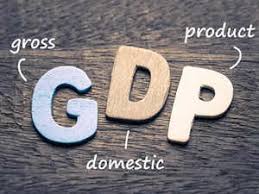
The Commerce Department reported GDP surged to 3.5%, well above most median economic estimates (full article). Is this the beginning of an era of increased economic prosperity? Will GDP continue to increase? Why is GDP increasing while housing stocks have tanked over 30% (S&P homebuilders index)? What about real estate in general? What does this mean for the greater economy and non-bank real estate loans?
What is driving the move in GDP?
On the surface GDP numbers look great, but it is important to look behind the headline number to see the true drivers of the GDP increase.
- Government spending: One of the largest drivers of the increase in GDP is government spending at the state and local level. As the economy has improved, more money has flown into state coffers. According to the census bureau: “ The increase in real GDP in the third quarter reflected positive contributions from state and local government spending along with federal government spending”
- Decrease in Savings: Along with increased spending from the government, consumers are also spending more fueled by a decrease in savings. Real wages have not increased substantially so the only way for people to spend more is to save less or borrower more. The recent GDP report highlights that “Personal saving was $999.6 billion in the third quarter, compared with $1,054.3 billion in the second quarter. The personal saving rate — personal saving as a percentage of disposable personal income — was 6.4 percent in the third quarter, compared with 6.8 percent in the second quarter.” Note this is down from 7.2% in Q1 of 2018 To drive the recent spending growth, consumers are saving less and therefore have less of a cushion for future needs.
- Increase in debt: Consumers are also spending more by increasing the amount of debt they have. The Federal Reserve’s latest Quarterly Report on Household Debt and Credit reveals that total household debt reached a new peak in the first quarter of 2018, rising $63 billion to reach $13.21 trillion. Balances climbed 0.6 percent on mortgages, 0.7 percent on auto loans, and 2.1 percent on student loans this past quarter. (New York Federal Reserve). Unfortunately, a debt fueled spending binge can’t last forever, at some point the consumer will have to “pay up” on their debt binge.
None of the three drivers above are sustainable drivers of GDP growth. They are merely a byproduct of the expansion that the economy is currently in. Business spending, innovation/efficiency, and long-term real wage growth are the only factors that can maintain the economic expansion. Furthermore, the great GDP numbers are concealing other long-term metrics that are painting a radically different picture of the economy.
GDP number not telling the full picture
GDP on the surface looks great but the details are unsettling when looking at wage growth and inflation:
Inflation: According to the GDP report: Excluding food and energy, gross domestic purchases prices increased 1.7 percent, after increasing 2.5 percent in the second quarter. Inflation is barely moving and not coming to a roar as predicted.
Real Wages: Real disposable personal income increased 2.5 percent in the third quarter, the same increase as in the second quarter. Between wages and inflation, the net change is .8% increase in real wages (2.5%-1.7%). Real wages is the “net” consumers have after factoring for inflation, this is essentially the net gain in purchasing power. This meager increase in “real wages” is not enough to sustainably drive an economic expansion.
Why have homebuilders tanked?
As GDP numbers continue to excel, the S&P homebuilders index has fallen 30%. Why has it fallen so far as the GDP continues to increase? With the economy plugging along so well one would expect consumers to increase long term purchases.
Without meaningful real wage growth consumers are unable/unwilling to make larger purchases. In many markets this is now reflected in greatly reduced sales. For example, in Denver, Colorado sales above 500k have fallen 44% when comparing September 2017 to September 2018. Real wages are not growing fast enough to compensate for the rise in property values.
Rates have risen substantially crimping buyer power. 10-year treasury rates have risen substantially and driven up 30 year mortgages above 5% from a low of around 3%. Without wage growth consumers can’t absorb such a large increase and therefore have refrained/delayed buying properties which is being felt through homebuilder stocks.
GDP and the “market” are looking at the economy very differently. Q3 GDP is being driven by non-sustainable items including government spending along with increased debt/decreased consumer savings. Over time consumers and government entities cannot sustain “deficit” spending to drive growth. As the saying goes “you’ll have to pay the piper”. The piper will need to be paid sooner rather than later! When the piper demands payment, the economy will shudder, and GDP will reflect the “shift”. Real estate undoubtedly will be impacted as prices/volumes adjust to the changes in demand as the piper comes calling.
Written by Glen Weinberg, COO/ VP Fairview Commercial Lending. Glen has been published as an expert in hard money lending, non-bank real estate loans, real estate valuation, financing, and various other real estate topics in the Colorado Real Estate Journal, the CO Biz Magazine, The Denver Post, The Scotsman mortgage broker guide, Mortgage Professional America and various other national publications.
Fairview is a hard money lender specializing in private money loans / non-bank real estate loans in Georgia, Colorado, Illinois, and Florida. They are recognized in the industry as the leader in hard money lending with no upfront fees or any other games. Learn more about Hard Money Lending through our free Hard Money Guide. To get started on a loan all they need is their simple one page application (no upfront fees or other games).
Sources
